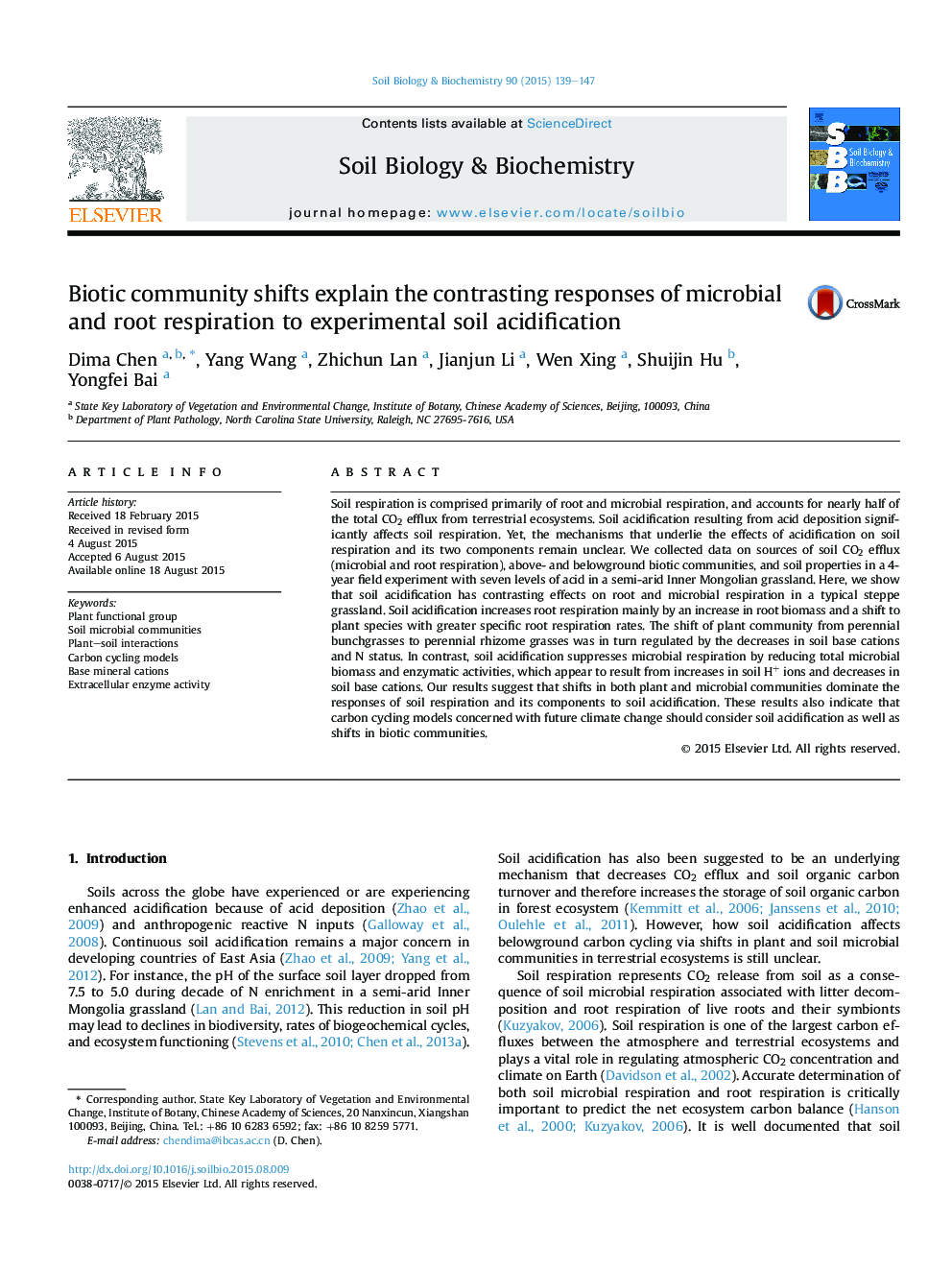| Article ID | Journal | Published Year | Pages | File Type |
|---|---|---|---|---|
| 2024386 | Soil Biology and Biochemistry | 2015 | 9 Pages |
•Soil acidification had contrasting effects on root and microbial respiration in grasslands.•Soil acidification increased root respiration through enhancing belowground carbon allocation.•Soil acidification suppressed microbial respiration through reducing total microbial biomass and enzymatic activities.•Shifts in biotic communities dominate responses of soil respiration to soil acidification.•Carbon cycling models should consider soil acidification as well as shifts in biotic communities.
Soil respiration is comprised primarily of root and microbial respiration, and accounts for nearly half of the total CO2 efflux from terrestrial ecosystems. Soil acidification resulting from acid deposition significantly affects soil respiration. Yet, the mechanisms that underlie the effects of acidification on soil respiration and its two components remain unclear. We collected data on sources of soil CO2 efflux (microbial and root respiration), above- and belowground biotic communities, and soil properties in a 4-year field experiment with seven levels of acid in a semi-arid Inner Mongolian grassland. Here, we show that soil acidification has contrasting effects on root and microbial respiration in a typical steppe grassland. Soil acidification increases root respiration mainly by an increase in root biomass and a shift to plant species with greater specific root respiration rates. The shift of plant community from perennial bunchgrasses to perennial rhizome grasses was in turn regulated by the decreases in soil base cations and N status. In contrast, soil acidification suppresses microbial respiration by reducing total microbial biomass and enzymatic activities, which appear to result from increases in soil H+ ions and decreases in soil base cations. Our results suggest that shifts in both plant and microbial communities dominate the responses of soil respiration and its components to soil acidification. These results also indicate that carbon cycling models concerned with future climate change should consider soil acidification as well as shifts in biotic communities.
